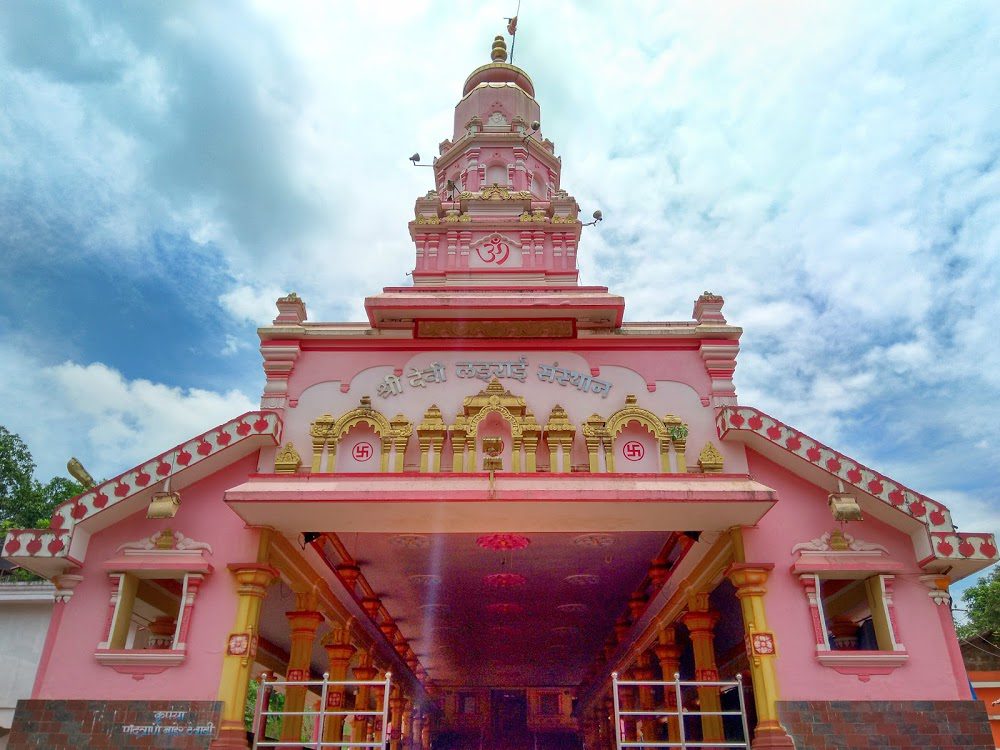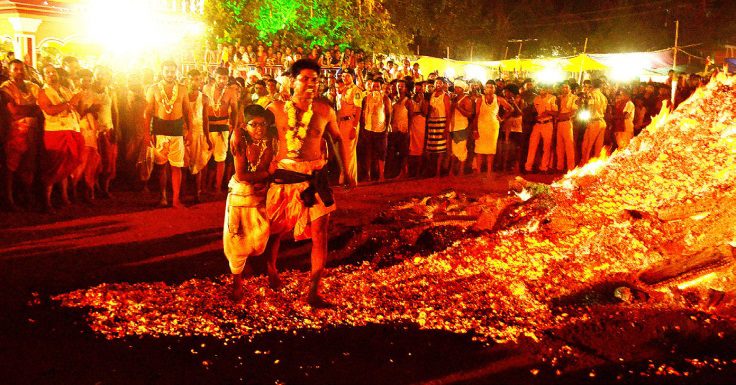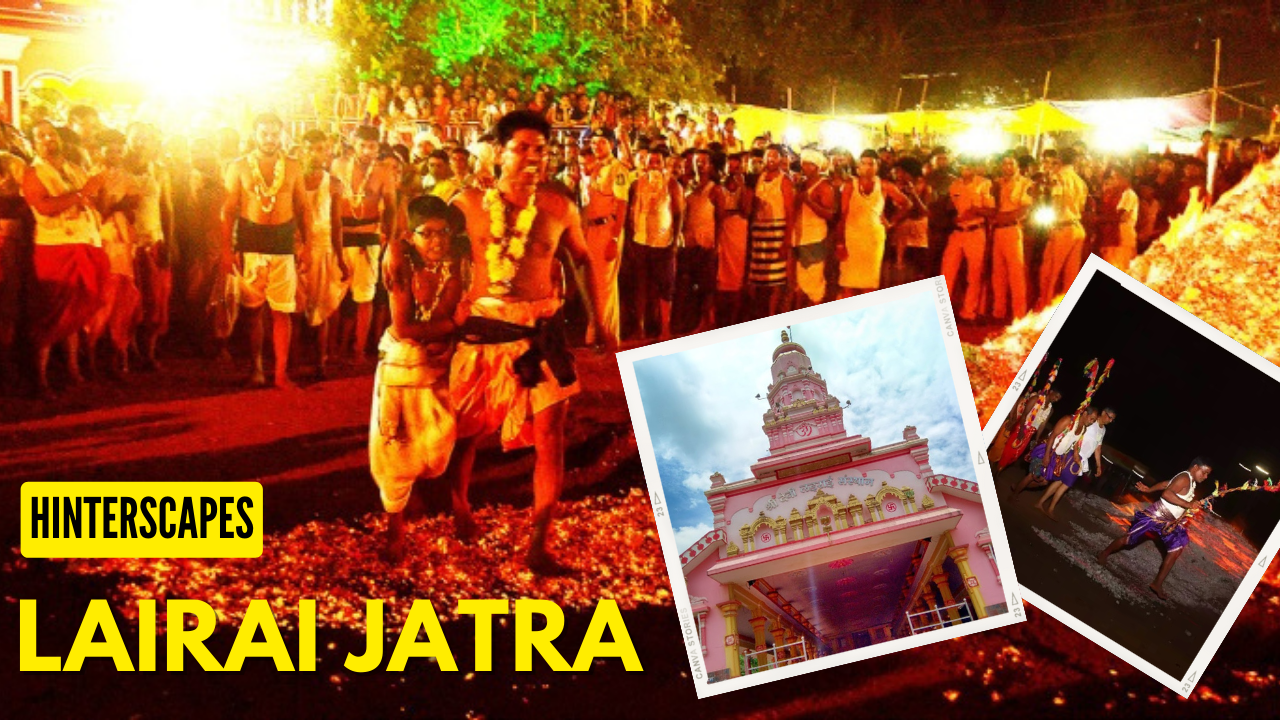Goa is home to many zatras, or religious festivals, one of the most captivating is the Shirgao zatra. Known as the Lairai zatra, it is held every year in April or May in the mining village of Shirgao, located in North Goa. This zatra pays homage to the goddess Lairai (Lairaiee), who is thought to be one of the seven sisters of God in Goa. As an incarnation of the goddess Parvati, Lairai is deeply revered by her followers. Lairai Jatra in Goa is one of the most awaited festival or feast in Goa.
The annual fire walking ceremony held at Shirgao, located near Assanora in the Bicholim Taluka, is among the most anticipated events in the Hindu calendar of religious celebrations.

Significance of Shirgao Lairai Jatra in Goa
The festivities are held in honor of the deity Sri Lairaie, who became popular after being brought to Shirgao, even though Sateri is the presiding deity of the village. In addition to Lairai, there are 14 other deities worshipped in Shirgao. According to local belief, Lairai is the sister of several deities, including Mahamaya of Mayem, Kelbai of Mulgao, Morjai of Morjim, and Shitalai of Mayem, as well as Mirabai, who was converted to Our Lady of Milagres in Mapusa, and Ajadipa from Anjadiv island. Lairai’s only male sibling is Khetoba from Vainginim.
For most of the year, Shirgao is a peaceful village, with only regular temple visitors and passing mining trucks disrupting the quiet. In the month of May, the village undergoes a dramatic transformation, becoming a bustling hub of activity as thousands of people arrive to participate in the annual fire walking ceremony.
Must Read: Chikhal Kalo – A Traditional Mud Festival of Goa
The temple’s representation of the deity Sri Lairaie is quite distinctive. She is depicted as a copper pot containing a white Mogra (Jasmine) flower bud, the very flower that is traditionally offered to her. Every year, the pot is updated with a new Mogra bud, with the old one being replaced.
Thrilling Fire Walk by at Shirgao Jatra Festival in Goa
The followers of Sri Lairai who participate in the fire walking ceremony are known as DHONDs, and include both men and women. They can be easily identified by their attire consisting of a dhoti with a towel wrapped around their waist. They hold a vibrantly woven cane stick called a Beth or bethkathi The Beth is a six-foot-long cane, curved at one end and adorned with colorful bunches of wool. These Dhond’s follow strict protocols in their daily routine. This includes a 40-day period of vegetarianism and taking a bath after each meal to maintain purity.

The day before the fire walking ceremony, a massive wooden pyre is constructed using dried barks and timber. The pyre’s base is around 10 feet square, with a conical top. Numerous devotees participate in the construction of the pyre by bringing and donating wood.
What Happens at Lairai Zatra‘s Famous Walk on a Fire in Goa?
The atmosphere is charged with excitement as thousands of Dhond’s and visitors gather around the pyre, filling the air with religious chants and enthusiastic energy. The Dhond’s circumambulate the pyre for a set number of times throughout the day, adding to the spectacle. They retire to the temple, where they engage in frenzied dancing. The sound of their cane sticks ringing out over the chanting and drumming.
As the clock strikes midnight, the deity is carried from the main temple to a shrine located near the towering wooden pyre. The procession passes the pyre, and a small flame is thrown into it, igniting the dry wood. The deity is then brought to the shrine, where more than 10,000 Dhond’s eagerly await this momentous occasion.

Around 2:30-3:00 AM, the massive pyre is reduced to ashes, and volunteers spread out the red-hot coals. As the appointed time approaches, the Dhonds begin to run barefoot through the blazing embers. We personally witnessed this remarkable event. Even being at a distance of 10 meters away, we could feel the intense heat emanating from the fire. It is truly astonishing to witness the sincere devotion of some of the participants, who walk calmly and resolutely walk over the burning embers.
Suggested Read: Virbhadra or Veerbhadra Dance Form of Goa
According to locals, there was once a colossal Banyan tree under which the pyre was lit. It was believed that the tree’s leaves would not get burnt by the flames. In 2010, the tree collapsed and had to be cut down.
Why was Lairai Jatra in Goa celebrated?
The zatra is an ancient tradition that commemorates a local folklore in which the danavas (demons) sought to burn down Shirgao, with the intention of destroying both Lairai and her followers. However, Lairai and her devotees bravely walked through the fire and extinguished it, saving the village.
According to the villagers, an interesting aspect of this village is that no one keeps hens. Villagers believe them to be unclean and could defile the temple by defecating in inappropriate places.
Visit our Website to know more about Festivals of Goa?
We at Hinterscapes take you to a Goa tour from a different angle. Goa is beyond beaches and night life. Visit our website and book your most affordable package which will give you a Goan feel of anything you do. Experience the real magic of Hinterland tourism in Goa.
Suggested Read: 14 Bizzare Festivals in Goa that will Leave You Thrilled
Follow us on Instagram to watch few amazing videos of unseen Goa. Stay tuned to our blog to read more of such interesting articles about Goa. Please tell us in comments how you felt about this unique Goan festival.





